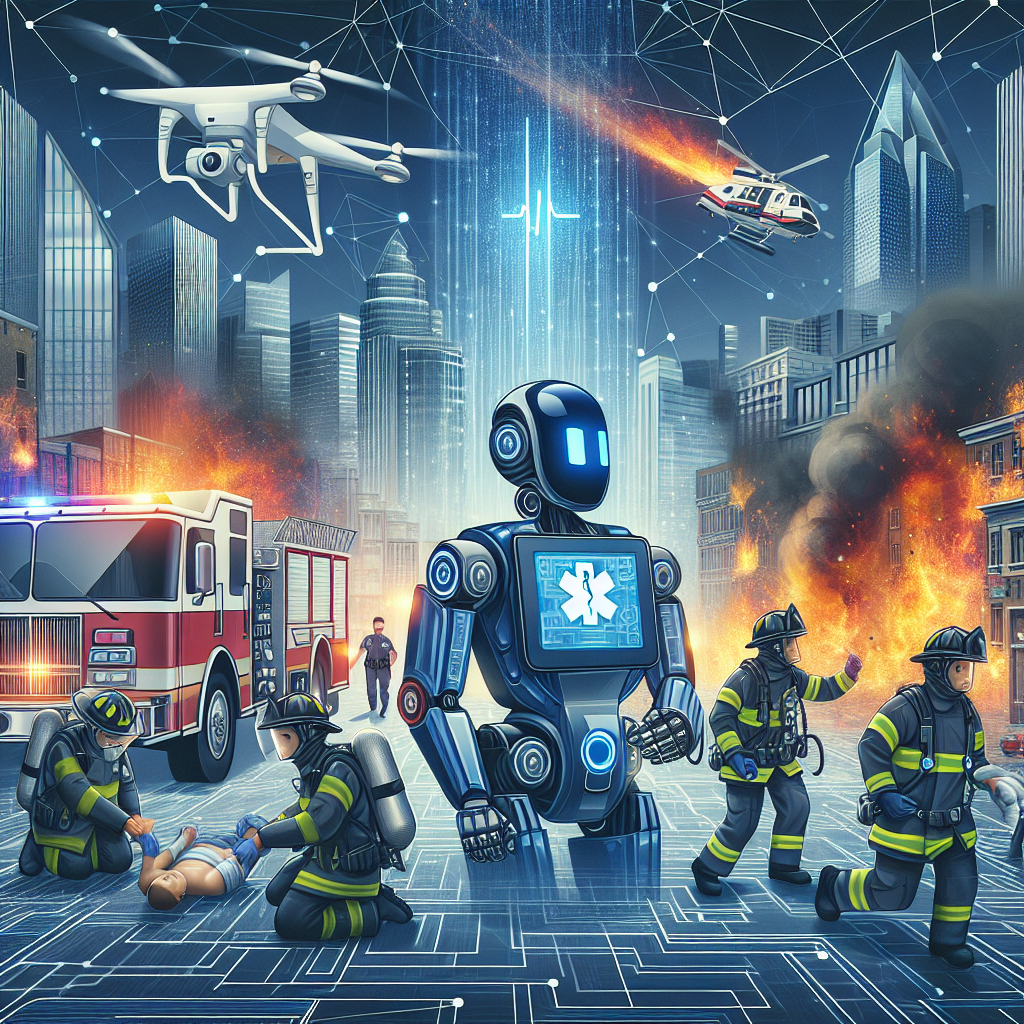In recent years, artificial intelligence (AI) has emerged as a powerful tool for enhancing public safety, particularly in emergency response and management. From predicting natural disasters to optimizing emergency response times, AI technology is revolutionizing the way first responders and emergency services operate. In this article, we will explore the various ways in which AI is being used to improve public safety, as well as address some common questions and concerns about the use of AI in emergency response.
One of the key advantages of AI in public safety is its ability to process vast amounts of data in real-time. This allows AI systems to quickly analyze information from various sources, such as social media, sensors, and surveillance cameras, to identify potential threats and hazards. For example, AI-powered algorithms can monitor social media posts to detect signs of emergencies, such as accidents or fires, and alert emergency services accordingly. This real-time data analysis can significantly improve response times and help first responders to better coordinate their efforts.
Another important application of AI in public safety is in predictive analytics. By analyzing historical data and patterns, AI systems can predict when and where emergencies are likely to occur, allowing emergency services to proactively allocate resources and prepare for potential disasters. For instance, AI algorithms can analyze weather patterns and geographical data to predict the likelihood of floods, allowing authorities to take preventive measures such as evacuations and building flood defenses.
AI technology is also being used to enhance emergency communication and coordination. With the help of AI-powered chatbots and virtual assistants, emergency services can quickly respond to inquiries from the public, provide real-time updates during emergencies, and streamline communication between different agencies and first responders. This improved communication can help ensure a more efficient and coordinated response to emergencies, ultimately saving lives and reducing the impact of disasters.
Furthermore, AI is being leveraged to improve the efficiency of emergency response operations. By automating routine tasks such as dispatching vehicles, routing emergency calls, and managing resources, AI systems can help emergency services to operate more smoothly and effectively. For example, AI-powered algorithms can analyze traffic patterns and optimize the routes of emergency vehicles to reduce response times and improve the overall effectiveness of emergency services.
In addition to enhancing emergency response, AI technology is also being used to improve disaster recovery and management. By analyzing satellite imagery and other data sources, AI systems can assess the extent of damage caused by disasters and prioritize areas for rescue and recovery efforts. This can help authorities to allocate resources more effectively and speed up the recovery process in the aftermath of disasters.
Despite the many benefits of AI in public safety, there are also some concerns and challenges associated with its use. One common concern is the potential for bias in AI algorithms, which can lead to discriminatory outcomes in emergency response and management. To address this issue, it is important for developers to ensure that AI systems are trained on diverse and unbiased data sets, and to regularly monitor and audit the performance of these systems to detect and correct any biases.
Another concern is the potential for AI technology to infringe on privacy rights and civil liberties. For example, the use of facial recognition technology in emergency response has raised concerns about surveillance and potential misuse of personal data. To address these concerns, it is important for authorities to establish clear guidelines and regulations for the use of AI in public safety, and to ensure that proper safeguards are in place to protect the privacy and rights of individuals.
In conclusion, AI technology has the potential to significantly enhance public safety, particularly in emergency response and management. By leveraging the power of AI to analyze data, predict emergencies, improve communication and coordination, and optimize operations, emergency services can become more efficient and effective in their efforts to protect and serve the public. However, it is important for authorities to address concerns about bias, privacy, and ethical considerations in the use of AI technology, and to ensure that proper safeguards are in place to protect the rights and well-being of individuals.
FAQs:
Q: How is AI being used to predict natural disasters?
A: AI technology can analyze historical data and patterns to predict when and where natural disasters are likely to occur. By analyzing factors such as weather patterns, geographical data, and historical trends, AI algorithms can forecast the likelihood of disasters such as floods, hurricanes, and earthquakes, allowing authorities to take preventive measures and prepare for potential emergencies.
Q: What are some examples of AI applications in emergency response?
A: Some examples of AI applications in emergency response include real-time data analysis to detect emergencies, predictive analytics to forecast disasters, chatbots and virtual assistants to improve communication, and automation of routine tasks to enhance the efficiency of emergency operations. These AI technologies can help emergency services to respond more quickly and effectively to emergencies, ultimately saving lives and reducing the impact of disasters.
Q: What are some concerns about the use of AI in public safety?
A: Some concerns about the use of AI in public safety include the potential for bias in AI algorithms, infringement on privacy rights and civil liberties, and ethical considerations related to the use of AI technology in emergency response. It is important for authorities to address these concerns and to establish clear guidelines and regulations for the use of AI in public safety to ensure that proper safeguards are in place to protect the rights and well-being of individuals.

